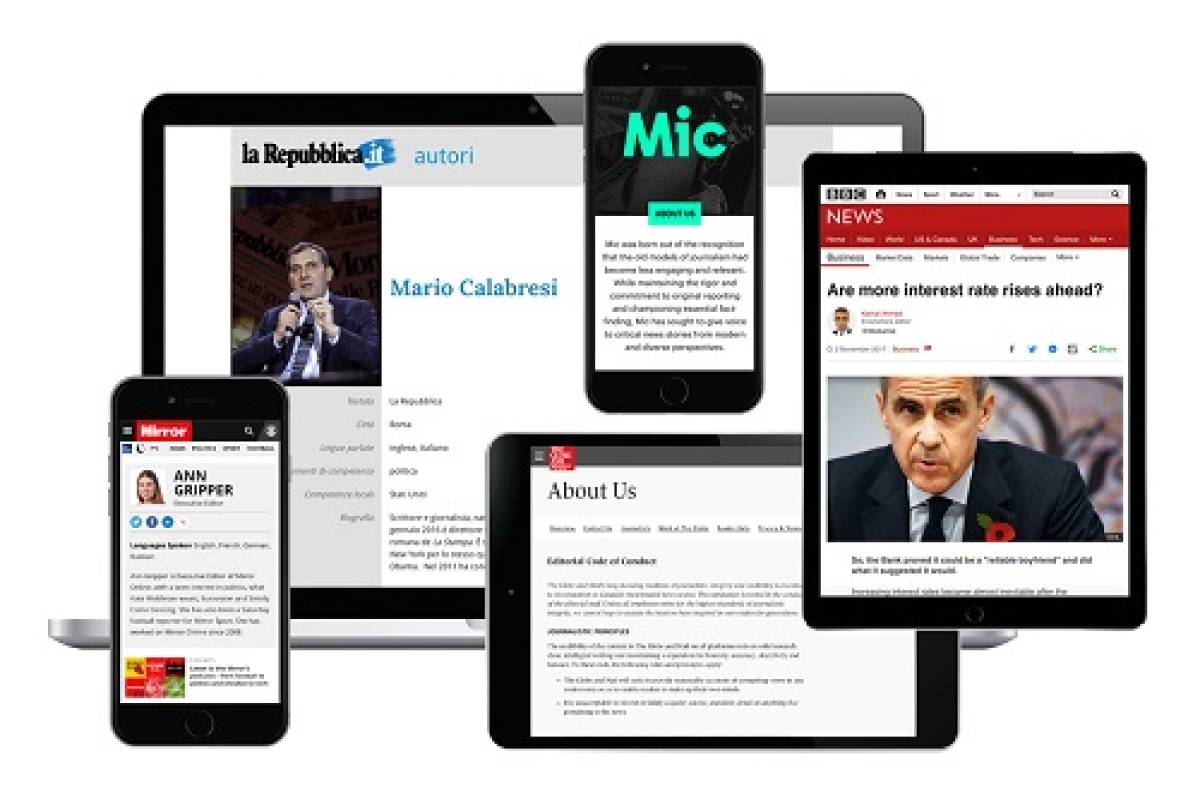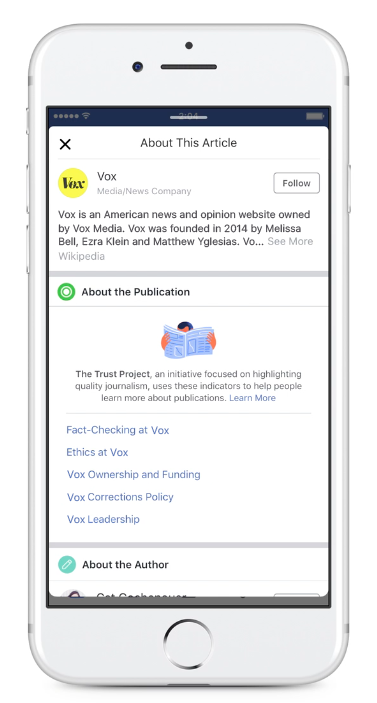Publishers, Tech Giants Agree to Display Standardized 'Trust Indicators' to Help Readers Vet Stories Online

Photo: Trust Project.
The biggest online publishers and technology companies including Google, Facebook, Bing and Twitter last week announced they have agreed to use new "trust indicators" to help readers vet the trustworthiness of the stories and the journalists behind articles published online.
The indicators, which were developed by the Trust Project, a non-partisan effort operating out of Santa Clara University's Markkula Center for Applied Ethics, aim to boost the fight against fake news, and strengthen transparency and media literacy at a time when misinformation is rampant online.
'Trust Indicators' to Fight Fake News Unveiled
"In today's digitized and socially networked world, it's harder than ever to tell what's accurate reporting, advertising, or even misinformation," Sally Lehrman, the journalist who heads the Trust Project, said in a statement. "The Trust Indicators put tools into people's hands, giving them the means to assess whether news comes from a credible source they can depend on."
Facebook began testing the indicators on Thursday. As part of the tests, select digital publishers have the option to upload additional information about their publication’s ownership structures, fact-checking policies, corrections policy, author histories, and more.
When you see an article from Vox or BuzzFeed, for example, Facebook will show an icon appearing as an “i” symbol alongside the article. You can tap the icon to learn more about the publication, including what the publications's ethics policy is and who funds it.

"This step is part of our larger efforts to combat false news and misinformation on Facebook — providing people with more context to help them make more informed decisions," Andrew Anker, a product manager at Facebook, wrote in a post on the social network’s Media blog.
The trust indicators will also show whether a story is an advertising or news report, highlight other articles by the author and offer more clarity on the sources used to back up claims in the story.
Google said it is currently looking into how best to display the indicators next to articles that show up in Google's search engine, Google News and other Google products.
“We believe the indicators can help our algorithms better understand authoritative journalism—and help us to better surface it to consumers,” Richard Gingras, vice president of news products at Google, said.
Tech Companies, Publishers Eager to Curb Spread of Misinformation
Earlier this month, Facebook, Google and Twitter were grilled by Congress over how foreign nationals used the social media platforms to spread misinformation during the 2016 U.S. presidential election. U.S. legislators are weighing potential regulation to curb this issue, and the tech giants seem eager to show they can do better to curb misinformation on their platforms.
Among the initial group of media publishers using the trust indicators are The Washington Post, The Economist, The Globe and Mail, Mic and others.
“As a news consumer, I want news I can trust. I want to be able to read a piece of fake news and know who’s behind it, where the information comes from, and the reporting values of the news organization,” said Craigslist founder Craig Newmark, whose philanthropic fund is helping to back this effort, echoing the feelings of many digital news and stories consumers.
See Also: AP Launches Listing of Viral Fake News Headlines Coming Out Each Week.

![9 Tips for Managing Your Online Writing Projects Efficiently [node:titile]](/sites/default/files/styles/thumbnail_rectangle/public/open-book-laptop-online-writing-tips.jpeg?itok=iq4PIT7b)


















![How Music Benefits Your Brain, Heart, & Physical Health [node:title]](/sites/default/files/styles/video_thumbnail_bottom/public/American%20woman%20enjoying%20music%20in%20headphones.jpeg?itok=gXymemvl)